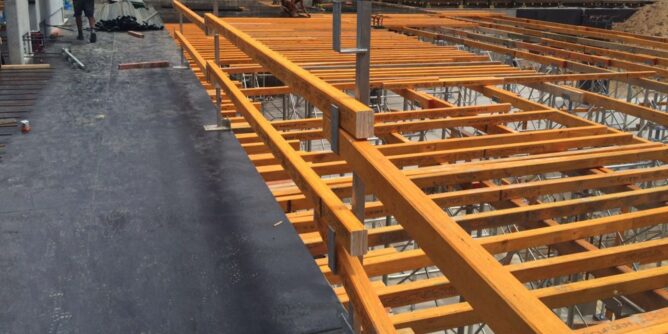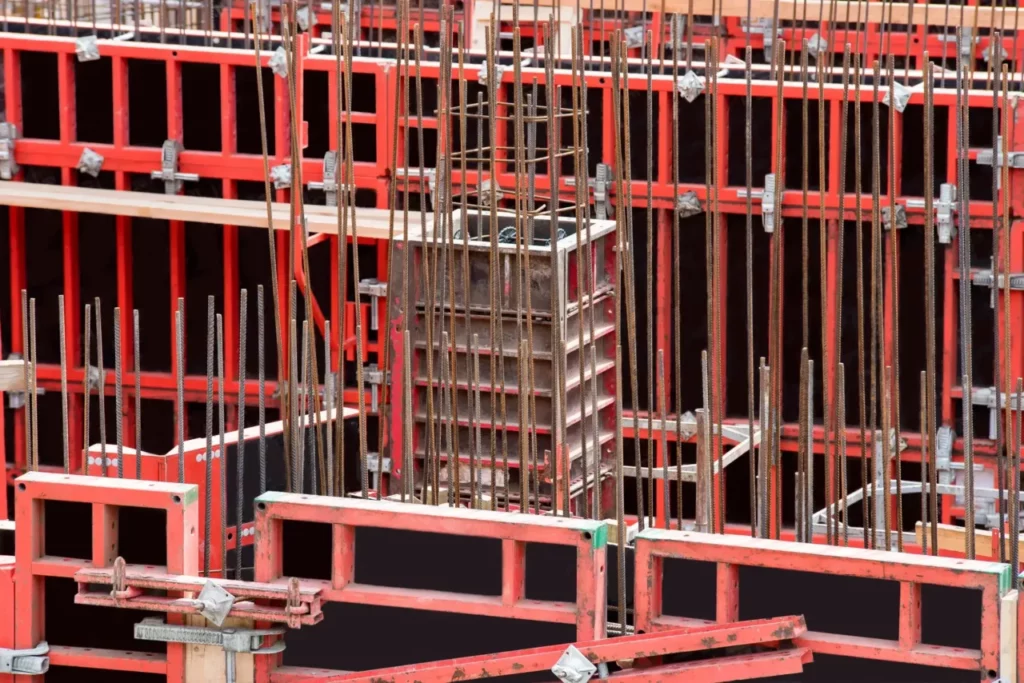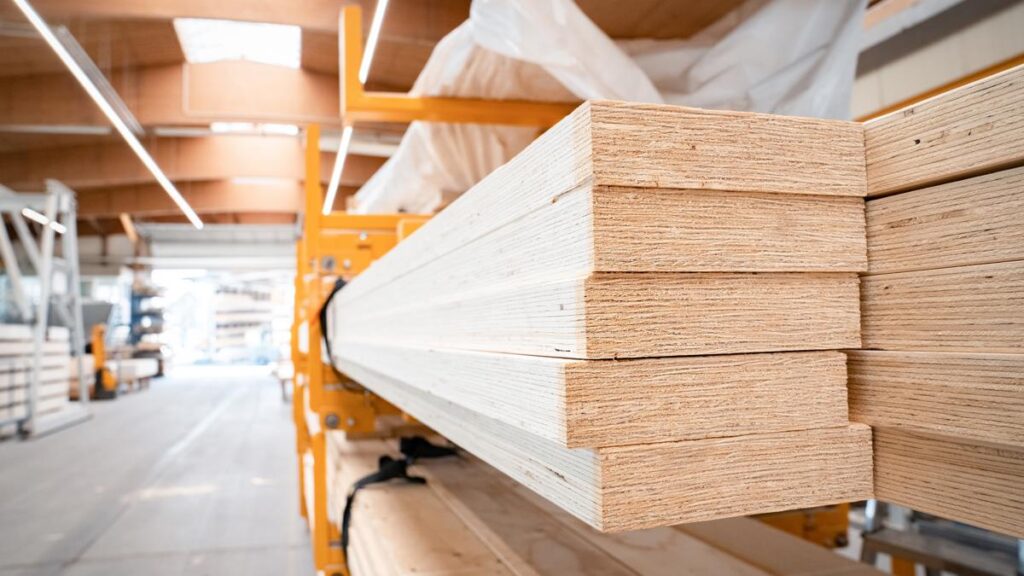
In the realm of sustainable construction, one crucial element that often goes unnoticed is LVL timber formwork. LVL, or laminated veneer lumber, is a material commonly used in construction projects due to its structural integrity and eco-friendly qualities. By shedding light on the overall understanding, importance, advantages, challenges, and future of LVL timber formwork, we can better appreciate its pivotal role in sustainable construction.
Understanding LVL Timber Formwork
Before delving into the specifics, let us first establish a comprehensive understanding of what LVL timber formwork entails. LVL timber formwork refers to the use of laminated veneer lumber panels as a temporary mold or structure for concrete placement. This technique has gained prominence in the construction industry due to the durability, versatility, and sustainability that LVL timber offers.
LVL timber formwork is a crucial component in modern construction projects, providing a reliable and efficient method for shaping concrete structures. The use of LVL timber formwork not only ensures the integrity of the concrete during the curing process but also facilitates intricate designs and shapes that traditional formwork methods may struggle to achieve.
Definition and Characteristics of LVL Timber Formwork
LVL timber formwork involves utilizing thin veneer layers of wood bonded together with adhesives to create a strong and stable panel. The key characteristics of LVL timber formwork include its high strength-to-weight ratio, uniformity, and resistance to warping or splitting. This makes it an ideal choice for various construction applications.
Furthermore, LVL timber formwork offers excellent dimensional stability, reducing the risk of concrete surface defects and ensuring a smooth finish. Its ability to withstand high pressure and heavy loads makes it suitable for use in large-scale construction projects where structural integrity is paramount.

The Manufacturing Process of LVL Timber Formwork
The manufacturing process of LVL timber formwork begins with the selection of sustainably sourced timber logs. These logs are then peeled into thin veneer sheets that are aligned and glued together under pressure. This process eliminates defects and ensures consistent quality. The resulting LVL panels are then cut to size and treated against insect infestations and moisture.
Moreover, the advanced manufacturing techniques used in producing LVL timber formwork panels result in a product that is not only environmentally friendly but also highly durable. The precision engineering involved in creating LVL timber formwork ensures that each panel meets stringent quality standards, providing construction professionals with a reliable and cost-effective solution for their formwork needs.
The Importance of Sustainable Construction
Now that we have established a solid foundation for understanding LVL timber formwork, it is crucial to emphasize the significance of sustainable construction practices. Sustainable construction aims to minimize negative environmental impacts while promoting long-term economic viability and social responsibility. Read more about sustainable at https://www.sustain.ucla.edu/what-is-sustainability/
The Concept of Sustainable Construction
Sustainable construction embraces a holistic approach that considers the entire life cycle of a building. It involves using materials and technologies that conserve resources, reduce energy consumption, limit waste generation, and promote occupant well-being. By adopting sustainable practices, we can significantly reduce the carbon footprint of the construction industry.
Furthermore, sustainable construction goes beyond just the materials and technologies used in the building process. It also encompasses the design phase, construction methods, and even the building’s eventual deconstruction or repurposing. This comprehensive approach ensures that every aspect of the building’s lifecycle is considered in terms of sustainability.
Benefits of Sustainable Construction for the Environment
The benefits of sustainable construction for the environment are undeniable. By utilizing renewable materials, implementing energy-efficient designs, and incorporating green technologies, we can minimize greenhouse gas emissions and combat climate change. Sustainable construction also promotes biodiversity preservation, water conservation, and waste reduction, protecting ecosystems for future generations.
Moreover, sustainable construction practices can have a ripple effect on the surrounding community and beyond. By setting a precedent for environmentally conscious building practices, sustainable construction projects can inspire other industries to prioritize sustainability. This domino effect can lead to a more sustainable future for all sectors of society, not just construction.
Read more at: Tips for Choosing the Best LVL Timber for Formwork
LVL Timber Formwork in Sustainable Construction
Now, let us delve deeper into the world of LVL timber formwork and its significant impact on sustainable construction practices. Laminated Veneer Lumber (LVL) is a versatile and eco-friendly material that has revolutionized the way structures are built. Its unique properties and advantages not only make it a popular choice among builders and designers but also contribute to reducing environmental impacts and enhancing construction efficiency.
One of the standout features of LVL timber formwork is its exceptional strength-to-weight ratio, which surpasses that of traditional formwork materials. This strength allows for greater flexibility in design and construction, enabling the creation of complex and innovative structures with ease. Additionally, LVL timber formwork’s durability and resistance to warping or twisting ensure long-term stability, providing a reliable support system for concrete placement.
The Advantages of Using LVL Timber Formwork
LVL timber formwork offers a myriad of benefits that set it apart from conventional formwork solutions. Beyond its lightweight nature, which simplifies handling and transportation, LVL timber formwork boasts an impressive sustainability factor. By being reusable for multiple construction cycles, it significantly reduces waste generation and promotes resource conservation. Furthermore, its dimensional stability guarantees precise concrete placement, minimizing the need for corrections or adjustments and ultimately enhancing overall construction quality.
Moreover, the versatility of LVL timber formwork extends to its adaptability to various project requirements and environmental conditions. Whether used in residential, commercial, or industrial settings, LVL timber formwork proves to be a reliable and cost-effective solution that aligns with sustainable construction principles. Click here to read more about adaptability.
The Impact of LVL Timber Formwork on Construction Efficiency
Efficiency is paramount in the realm of sustainable construction, and LVL timber formwork stands out as a key facilitator of streamlined building processes. Its user-friendly installation and demolding procedures significantly reduce construction timelines, enabling builders to meet project deadlines with ease. The modular design of LVL timber formwork further enhances efficiency by allowing for swift assembly and disassembly, optimizing labor and resource utilization throughout the construction phase.
Challenges and Solutions in Implementing LVL Timber Formwork
As with any construction technique, there are challenges that need to be overcome when implementing LVL timber formwork. However, innovative approaches have been developed to address these obstacles and ensure smooth integration in sustainable construction projects.
Implementing LVL timber formwork offers numerous benefits, including its high strength-to-weight ratio, which allows for efficient construction processes and reduced labor costs. The dimensional stability of LVL timber also contributes to precise formwork assembly, resulting in smooth concrete finishes and improved overall project quality.
Common Obstacles in Using LVL Timber Formwork
One of the common challenges faced when using LVL timber formwork is moisture-related issues. Timber is susceptible to swelling or shrinking when exposed to varying levels of humidity. However, proper treatment and sealant application can mitigate such concerns and enhance the longevity of LVL timber formwork. Additionally, training and skill development programs for workers can help overcome any technical difficulties encountered during the formwork process.
Another challenge in implementing LVL timber formwork is the need for specialized equipment and tools to ensure precise cutting and assembly. However, investing in high-quality tools and machinery can streamline the construction process and improve the overall efficiency of formwork installation.

Innovative Approaches to Overcome Challenges
To tackle moisture-related challenges, advanced coatings and sealants with improved waterproofing properties have been developed specifically for LVL timber formwork. These innovative solutions protect the timber from moisture and prolong its lifespan, ensuring its viability for multiple construction cycles. Furthermore, ongoing research and development aim to improve the overall performance and durability of LVL timber formwork, making it an increasingly sustainable option for the future.
Continuous advancements in digital technologies have also revolutionized the design and planning phase of LVL timber formwork projects. Building Information Modeling (BIM) software allows for detailed 3D modeling of formwork structures, enabling precise material calculations and efficient project management. This digital innovation not only enhances accuracy in formwork design but also facilitates better communication among project stakeholders, leading to smoother construction processes and timely project completion.
The Future of LVL Timber Formwork in Sustainable Construction
Looking ahead, it is essential to assess the future prospects of LVL timber formwork in sustainable construction practices. Several emerging trends and the long-term sustainability of this technique reinforce its position as a key player in the construction industry.
Emerging Trends in LVL Timber Formwork
An emerging trend in LVL timber formwork is the integration of digital design and prefabrication techniques. By utilizing computer-aided design and manufacturing processes, LVL timber formwork can be customized to fit the unique requirements of each project. This leads to increased efficiency, reduced material waste, and improved construction quality.
Furthermore, the incorporation of advanced sensors and monitoring systems into LVL timber formwork is another emerging trend. These sensors can provide real-time data on factors such as load distribution, moisture levels, and structural integrity. This data can then be analyzed to optimize construction processes, identify potential issues, and ensure the longevity of the formwork.
The Long-term Sustainability of LVL Timber Formwork
The long-term sustainability of LVL timber formwork lies in its capacity for circularity in construction. As the demand for sustainable construction grows, the reuse and recycling of LVL timber formwork panels become paramount. When an LVL timber formwork panel reaches the end of its lifecycle, it can be repurposed into other timber-based products, extending its usability and minimizing waste.
Moreover, the use of LVL timber formwork promotes sustainable forest management practices. LVL is typically made from fast-growing plantation trees, which reduces the pressure on natural forests. Additionally, responsible sourcing and certification programs ensure that the timber used in LVL formwork comes from well-managed and renewable sources.
In conclusion, LVL timber formwork plays a vital role in sustainable construction. By understanding its definition, characteristics, manufacturing process, and advantages, we can appreciate the immense value it brings to the industry. While challenges exist, innovative solutions and emerging trends ensure its place in the future of sustainable construction. By harnessing the power of LVL timber formwork, we can create a built environment that is not only structurally sound but also environmentally responsible.
